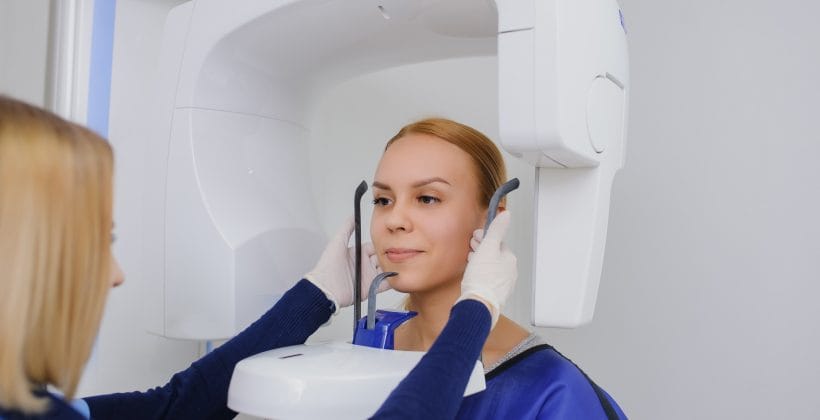As you probably know, it is recommended to visit the dentist every six months or when you are experiencing dental pain. Consistent check-ups allow your dentist to detect any potential problems with your teeth early. The longer dental issues go left untreated, the more like they are to cause serious pain and damage.
One of the most common practices at your semi-annual check-up is for your dentist to take X-rays of your mouth. X-rays help your dentist to accurately diagnose and monitor your teeth for any potential underlying problems.
What are dental X-Rays?
A dental X-ray is a tool used by your dentist that allows them to see deep inside and around your teeth, down to the layer of your bones. X-rays allow dentists to clearly see the roots of your teeth, as well as cavities and other problems that would be invisible to the naked eye. When these problems are identified and addressed at an early stage, they are much more likely to be easily treated. Dental x-rays can be used to check for cavities, bone loss, and both benign and malignant masses in the mouth.
What kinds of X-Rays are there?
Dental X-rays fall into two main categories: intra-oral and extra-oral.
Intra-oral X-Rays are the most common type and are used to find cavities, check the roots of your teeth, see the status of growing teeth, and assess the overall health of your mouth and jaw. With intra-oral x-rays, the x-ray film is inside the mouth, giving a very high level of detail. These include:
- Bite-wing x-rays which show details of the upper and lower teeth in one area of the mouth
- Periapical x-rays which show the whole tooth — from the crown, to beyond the root where the tooth attaches into the jaw.
Extra-oral X-Rays mainly focus on your jaw and skull. Although they do show teeth, they are most helpful in monitoring them in relation to your jaw bone. They show dentists areas where teeth are impacted and also keep track of tooth and jaw development. With extra-oral x-rays, the x-ray film is outside the mouth. These include:
- Panoramic x-rays which show the entire mouth area — all the teeth in both the upper and lower jaws — on a single x-ray.
- Tomograms which show a particular layer or “slice” of the mouth and blur out other layers. This x-ray examines structures that are difficult to clearly see because other nearby structures are blocking the view.
What about the radiation?
One common misconception about medical X-rays is that they emit dangerous amounts of radiation. Radiation in high doses can cause a variety of medical issues: radiation poisoning, cancer, etc. Although the idea of radiation can be scary, in reality, modern technology has greatly limited the amount of radiation used in X-rays. With the proper equipment and safety precautions, X-rays are completely safe.
In conclusion
X-rays are an important and useful part of your dental check-ups and can be used to save you a lot of pain, time, and money in the long run. By catching problems early, your dentist can treat them right away and stop them from evolving into anything more serious. If you have a dental check-up coming up soon, ask your dentist if your X-rays are up to date.
If you haven’t had dental X-rays in a while, or need a dental check-up, contact us today! We can assess your mouth and oral health to make sure everything is in tip-top shape.


